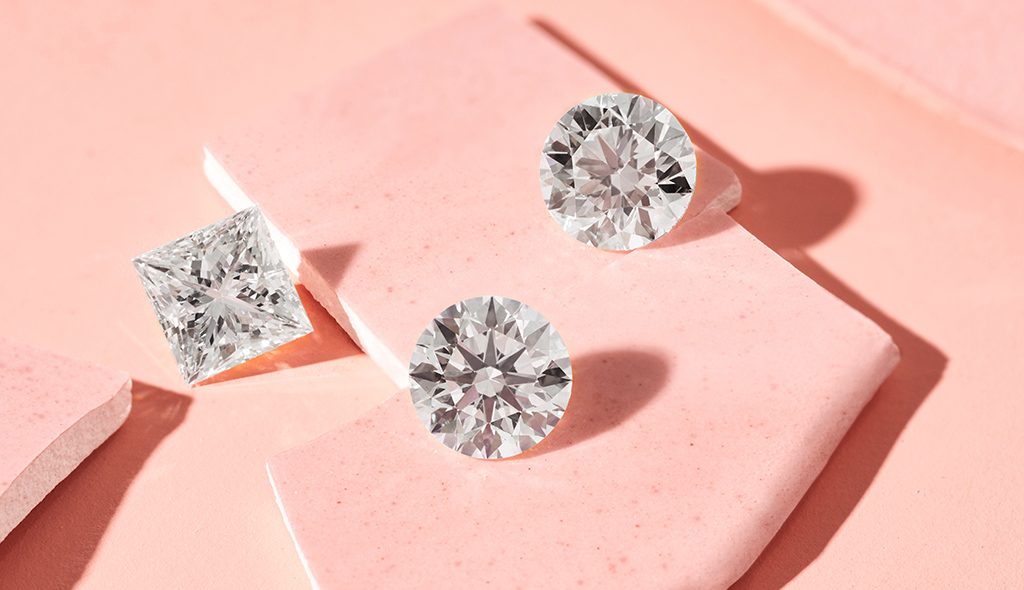Table of Contents

If you’re starting off your diamond engagement ring research in 2022, you’ll stroll onto a landscape vastly distinctive from even a 10 years ago.
Laboratory grown diamonds have become a viable advice and in transform option for many couples through their look for for the ideal engagement ring, or any high-quality diamond jewellery for that issue.
We’re considerably from a milieu the place laboratory diamonds dominate the fantastic jewelry world, but they have a whole lot heading for them, and we’ll be viewing a great deal additional of them in the coming decades.
Let us examine their origin story, and how this compares to that of mined diamonds.
Laboratory grown diamonds in a nutshell
Lab-grown diamonds (also referred to as laboratory-manufactured diamonds, lab diamonds, male-made diamonds, cultured diamonds) are as serious as any diamond that has ever been mined from the Earth.
Laboratory diamonds are created in controlled laboratories that mimic and enormously expedite the pure diamond development procedure from millions of several years to months.
Employing the similar ingredients as the Earth’s mantle (carbon) this method yields real and serious diamonds with their attribute crystal composition, sparkle, fireplace and longevity.
They are 100% true diamonds.
How are diamonds built?
Mother earth has applied the very same recipe for thousands and thousands of a long time:
Normal occurring carbon + excessive pressure + superior warmth = crystallised carbon (diamond).
Modern day science retains that diamonds were fashioned at the very least hundreds of thousands and thousands of a long time in the past at a depth of up to 150kms beneath the Earths surface area.
Carbon discovered alone in a limited location in temperatures of up to 1100’C and tension as superior as 50 000 atmospheres.
The carbon crystallised into diamonds and was then moved in direction of the earth’s area by means of volcanic exercise above aeons.
To start with To The Bash: Higher Tension, Superior Temperature (HPHT)
The race to produce a diamond in a laboratory setting started out in the early 1940s, but initiatives had been disrupted by the war.
In 1958 experts at Normal Electric powered took 1st prize by efficiently building a diamond in a managed environment by crystalising carbon as a result of huge tension and temperature in a chamber.
And in what I think was a brief meeting, GE named the approach: “Large Pressure, High Temperature” (HPHT).
In the HPHT approach, a small diamond (seed) is positioned in the centre of a chamber stuffed with carbon. Making use of strain up to 100 000 atmospheres, and temperatures achieving 2000’C celsius, the carbon melts and crystalises all around the seed therefore developing it.
Employing this process, diamonds of a useable size can be grown in a couple limited months.

*Diamonds just after the HPHT expanding approach.
Exciting Truth the existing earth history for the major lab-grown diamond is a whopping 155cts! By ze Germans, of training course.
And then Chemical Vapour Deposition (CVD)
A number of many years later the CVD system was perfected and offered a 2nd approach for crystallising carbon into diamonds in a laboratory.
A compact seed diamond (frequently formed by HPHT) is put into a chamber that is stuffed with a carbon-rich gasoline.
The gas is then ionised into a plasma making use of technological know-how equivalent to lasers and microwaves. This fundamentally breaks down the molecular bond of the fuel, and when heated to all-around 700’C pure carbon commences raining down in the chamber, crystalising layer by layer on top of the seed diamond.
Although the CVD process would seem additional technologically superior, the HPHT process is even now found as the greatest approach to expand gem-quality diamonds for superior-conclude jewelry.
Additional Processing into the gems we love and treasure.
No matter of how the carbon was crystalised, the relaxation of the producing cycle is similar.
Initial Move: Planning
Tough diamonds, whether or not mined or lab-made appear in all designs and measurements.
Rough diamonds are 3D scanned and working with fashionable imaging systems experts finely determine what the greatest in good shape of shape and sizing is to the tough materials.

*A Rough diamond being analysed with a Sarin machine.
The essential form is marked by lasers and the diamond is moved on to the next move of producing.
Next Move: Chopping and Polishing.
The rough diamond is then slash by even more powerful solid lasers employing the suggestions marked all through arranging.
After the diamond is lasered into its blueprint, they are transferred to a diamond cutter who then meticulously finishes and polishes the diamond into its shiny last condition.
Final Phase Grading
The moment the diamonds are all polished up, they’re individually packed and sent off to unbiased diamond grading laboratories.
In this article, gemologists get wonderful treatment in grading each and every diamond in accordance to its color, clarity and sizing.
The newly graded diamonds are repackaged into neat grading certificates indicating all the diamond’s special specs and returned to the company who then distributes them down his product sales chain.
The most dependable laboratory for grading mined diamonds is the GIA.
Even though the GIA also grades laboratory-developed diamonds, the IGI appears to be to have taken the guide in this section.

IGI certification is by no indicates inferior, but it is materially a lot more inexpensive than the GIA route. With laboratory diamonds buying and selling at up to 60% considerably less than mined diamonds, a lot more very affordable grading was a fantastic match.
In our practical experience, the grades troubles by IGI simply keep up to the GIA criteria.
Each are honest, regular, internationally regarded and recognised.
Similar, exact same?
The line separating laboratory-created diamonds and mined diamonds is paper-slender.
Apart from how purely natural is crystalised, the processing is identical.
The long run is lab-grown diamonds is vibrant.
It is certainly worth on the lookout into for your dream engagement ring.
If you have any queries, you can obtain me at [email protected]
And right here is some exciting further looking at
Choose Treatment
Johan Poggenpoel
Co-Founder, Poggenpoel Jewellers
www.poggenpoel.com



:max_bytes(150000):strip_icc():focal(999x0:1001x2)/rita-moreno-2024-oscars-031024-54cb2c55c28543c6893ec395fd29d6de.jpg)


